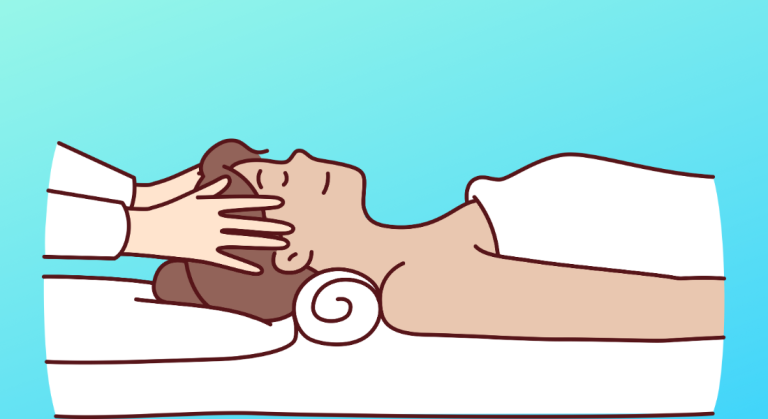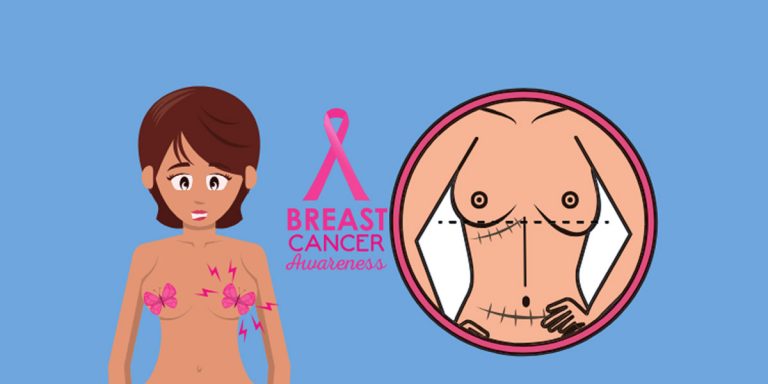Cervical radiculopathy is related to the compression of the cervical nerve root localized in the neck, producing pain, pins and needles, radiating into the arm, and fingers, on the same side.
The most common level of cervical nerve root impingement occur at the seventh (C7, 69%), and the sixth (C6, 19% of all cases).
Sign and Symptoms
- Pain in one side of the neck.
- Pain is aggravated with turning the head for safe driving (painful side), and looking up.
- Tingling or pins and needles int the fingers or hand.
- Loss of sensation.
- Weakness in the muscles of the arms, shoulder, hand, and fingers.
- Decreased neck movements.
- Pain between neck and shoulder (one side).
- Shoulder blade pain (one side).
- Loss of feeling in the arm and fingers.
- Hand feels uncoordinated
Pain and symptoms vary according to the level of cervical nerve impingement.
- C2 Headaches at the base of the skull, and the temples (one side).
- C3-Headache at the base of skull, and behind the eyeball.
- C4-Pain over the base of skull and between head and shoulder (one side).
- C5-Pain in the arm-lateral side.
- C6. Pain in the forearm going down to the thumb, and index finger.
- C7-Pain in the middle finger.
- C8-Pain in the ring and pinky finger.
- T1- Pain in the forearm going down to the pinky finger.
Muscle Weakness according to the level of cervical root impingement.
- C5-Difficulty with reaching to the side and bending the elbow (carrying a bag).
- C6-Difficulty with bending the elbow and bending the wrist (the movement for typing).
- C7-Difficulty with keeping the elbow straight, with wrist bend (hiding something in the hand).
- C8-Difficulty with making a fist.
- T1-Difficulty with pinching a paper between the thumb and index finger.
Causes
- Age-related degenerative changes in intervertebral disc height. Please check Neck Pain blog for more information.
- Traumatic events (car accident).
- Herniated disc where the cervical disc bulges out and put pressure on the nerve root, causing pain and discomfort from the neck to the affected arm.
- Infection
- Tumor
Risk Factors
- Repetitive movements that involve lifting more than 25 pounds.
- Smoking.
- Operating or driving vibrating equipment.
- Cervical Spondylosis
- Neck trauma from sports, or car accident.
- Age 50 years or older.
- Poor posture.
Precaution
Avoid using a neck collar for greater than 1 to two weeks to prevent neck muscle to become weaker.
Recovery Time
6 to 10 weeks is the optimal time to relief the symptoms. If the patient continues with pain and the symptoms described above. The Patient will be refer to a spine or pain management doctor for further assessments.
What a Physical Therapy Can Do?
Physical therapy is a very effective choice to reduce radicular pain in the arm, improve range of motion, strength, and improve ability to do activities of daily living, and in many cases prevent surgery.
» Treatment to decrease pain, improve range of motion, and muscle spasms:
- Neck collar or cervical collar. Resent research found that wearing the collar for no more than 1 to 2 weeks might help decrease muscle spasm, and reduce pain. In addition, the range of motion of moving the head to look down increases, when cervical collar is placed backward.
- Cervical traction might help reduce neck pain and radicular symptoms.
- Ice pack and heat packs for short-term pain relief.
» Treatments to decrease pain, improve range of motion, and function
- Cervical traction with physical therapy might help decrease pain, centralize arm symptoms, improve range of motion, and function.
» Therapeutic Exercises to reduce cervical radiculopathy
Posture Reeducation exercises:
Neck Exercise Progression:
Start on the back then on the stomach, then on hands and knees, sitting, and progress to standing.
» Chin tucks
- Rest on the back and bend the knees up to protect the the lower back.
- Place a book under the head to prevent the neck from hyperextending.
- Tuck the chin toward the neck pressing into the book.
- Hold 30 seconds/Repeat 3 times repeat four times per week
» Shoulder Blade Squeezing
- Rest on the back with knees bend.
- Flatten the shoulder blades against the floor.
- Bend elbows at 90 degrees.
- Maintain the chin tuck. (Pillow is optional).
- Push elbows against floor and squeeze shoulder blades together.
- Hold 30 seconds/do it daily.
» Arm Rise (“Y” shape)
- Rest on stomach
- Rest the head on the other forearm
- Arm straight in a diagonal (“Y” shape”)
- Elbow slightly bent.
- Thumb up
- Lift arm toward the ceiling
- Tilth the shoulder blade backward while the arm is raising to avoid shrugging the shoulder.
- Hold 10 seconds/repeat 10 times.
» Gentle Pectoral Stretch
- Fold a towel in half lengthwise and roll it up. Place the rolled towel on the floor, from the base of the neck down to lower back and rest on it.
- Place a pillow under the head.
- Bend the knees up to protect the lower back.
- Keep arms next to the body.
- Rest in this position for two minutes.
- Do this stretch daily.
- Modification: bring arms out (“T” shape)
» Exercises to Improve Neck Range of Motion
Scalenus Muscle Stretch.
- Levator scapulae muscle stretch.
- Upper trapezius muscle stretch
- Pectoralis muscle stretch
» Exercises to Improve Strength
Wall Push Ups
- Face the wall
- Place hands on wall at shoulder level.
- Bend forward toward wall bending the elbows
- Push back from the wall, straightening the elbows and repeat.
- Repeat 10 times
- Do daily
Wall Slide to Strengthen Middle and Lower Trapezius
back and elbows bent against the wall Slide arms up and down the wall keeping the middle back on the wall the whole time.
Consult with the physical therapist if the exercise produce pain to assess the form or to make modifications according to patient’s needs.
Very Important to Know:
Cervical Manipulation is not recommended according to resent research due to the lack of evidence in its effectiveness in reducing neck pain.
Prevention
- Patient education in posture awareness
- Modify any activity that produce pain.
- Daily physical activity
- Desk/wor station with proper ergonomics
If you are dealing with physical and emotional pain, or you want to be more active and you don’t know how to start, call now to find out how Physical Therapy can help you recover faster, move easier, and effortless: 805-203-9940
The information in this blog is for educational and informational purpose only, its content is provided based upon evidence-based medicine, knowledge, and experience as a Doctor of Physical Therapy (DPT).




